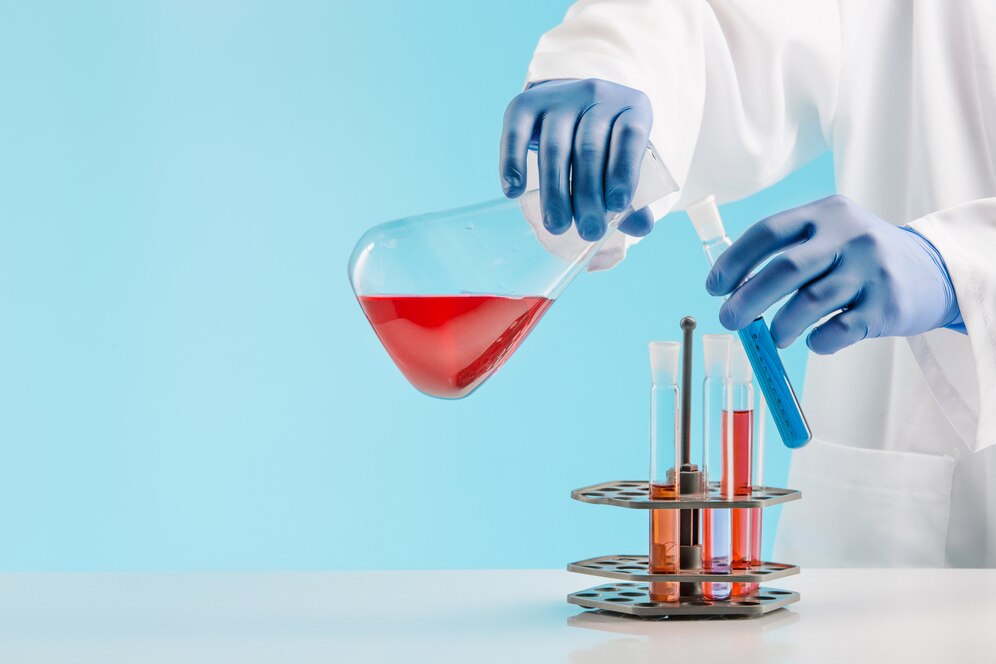Impurity Characterization & Management
Impurities in pharmaceuticals devices may come from raw materials, reaction byproducts, or residual solvents. The potential and concentration of these compounds are usually taken into account during the risk assessment. And those impurities or contaminants would cause unexpected reactions in these processes, which may affect the API synthesis step or the medical manufacturing stages and may also affect the final stability and shelf life of API or medical device components. Therefore, the characterization and management of potentially problematic species is essential in the process of drug development.
 Distributed under Freepik License, from Freepik.
Distributed under Freepik License, from Freepik.
Creative Biolabs has the experience of using analytical techniques to characterize impurities or contaminants and pays attention to the impurities that are called Potential Genotoxic Impurities (PGIs), which are known to be potential mutagens or carcinogens and are capable of causing genetic mutations and contribute to the formation of tumours, The PGIs including:
- Simple aromatics – benzene, PAH's
- Alkyl halides, mesylates, tosylates, triflates, sulphates
- Isocyanates
- Ureas – carbamates
- Aromatic amines – some anilines
- Aldehydes – formaldehyde
- Epoxides
- Nitroso compounds – nitrosobenzene
- Azo compounds - azobenzenes
- Nitro compounds
- Some sulphonates - chlorosulphonates
- Phosphorus compounds – HMPA
Various analytical techniques are applied to characterize trace material impurities or contaminants, which are often down to parts-per-billion (ppb) levels:
- GC-MS: GC-MS is widely used for the analysis of a diverse array of samples in pharmaceutical, biochemical research. In a quantitative analysis, the height or area of a chromatographic peak is used to determine its concentration. GC-MS also can be used for qualitative purposes. When using a mass spectrometer as the detector, the available spectral information often can be used to identify individual solutes. Analytes present at levels from major to ultratrace components have been successfully determined by GC-MS. Although the volume of sample injected is quite small (often less than a microliter), the amount of available material from which the injection volume is taken must be sufficient to be a representative sample. For trace analytes, the actual amount of analyte injected is often in the picogram range.
- LC-MS: The coupling of MS with LC systems is attractive because liquid chromatography can separate delicate and complex natural mixtures, which chemical composition needs to be well established. Nowadays, LC-MS has become one of the most widely used chemical analysis techniques because more than 85% of natural chemical compounds are polar and thermally labile and GC-MS cannot process these samples. The important applications of LC-MS include the analysis of medicines, pesticides, and plant phenols.
- HPLC: In HPLC, a liquid sample, or a solid sample dissolved in a suitable solvent, is carried through a chromatographic column by a liquid mobile phase. Separation is determined by solute/stationary-phase interactions, including liquid–solid adsorption, liquid–liquid partitioning, ion exchange and size exclusion, and by solute/mobile-phase interactions. HPLC is routinely used for both qualitative and quantitative analyses of pharmaceutical, industrial, clinical, and consumer product samples.
- NMR: The structure of many compounds can be determined by studying the peaks of nuclear magnetic resonance spectra. It can be a very selective technique, distinguishing among many atoms within a molecule or collection of molecules of the same type but which differ only in terms of their local chemical environment. NMR spectroscopy is used to unambiguously identify known and novel compounds.
Please feel free to contact Creative Biolabs to learn how impurity characterization and management service may fit into your next project.
For Research Use Only.
